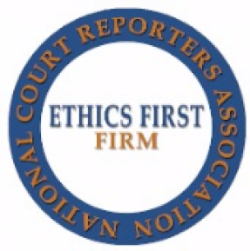Trial Presentation Dependable Solutions for Structuring and Presenting Evidence
Trial Presentation Dependable Solutions for Structuring and Presenting Evidence
Blog Article
Mesmerize the Jury: Essential Components of a Powerful Test Discussion
Important elements such as recognizing the audience, crafting an engaging story, and mastering verbal and non-verbal interaction are crucial parts of an effective presentation. As these variables link, they create a natural method that not only notifies yet additionally engages jurors on multiple degrees.

Comprehending Your Target Market
Understanding your audience is an essential element of reliable trial presentation. A successful presentation rests on the capability to realize the demographics, worths, and tendencies of jurors. This comprehension notifies how arguments are mounted, evidence is presented, and sob stories are crafted, making sure that the message resonates with the jurors on a personal level.
Research study shows that jurors come from varied backgrounds and might have differing levels of recognizing regarding legal proceedings. Additionally, recognizing the jurors' prospective prejudices and life experiences allows the test speaker to expect objections and address concerns proactively.
Efficient test discussion also includes observing jurors' responses throughout the proceedings. Involving with jurors as individuals rather than a cumulative unit is crucial in promoting a strong connection in the court room.

Crafting a Compelling Narrative
Crafting a compelling narrative is important in leading jurors with the intricacies of a situation. A well-structured story not only simplifies intricate lawful concepts yet additionally engages jurors on a psychological degree, making the info much more relatable and unforgettable.
To attain this, attorneys need to begin by recognizing the core message they desire to convey. This message should resonate with the jurors' values and experiences, cultivating a connection that goes beyond simple realities. The narrative must unfold rationally, offering occasions in a clear series to prevent confusion. This chronological method can aid jurors comply with the development of events, stressing reason and result.
Incorporating human components-- such as individual tales or anecdotes-- can further boost the story's impact. These elements evoke compassion, permitting jurors to visualize the consequences of the case on realities. Furthermore, utilizing a regular theme throughout the discussion reinforces the primary argument, making it less complicated for jurors to retain crucial points.
Eventually, a compelling narrative transforms a trial presentation from a mere recitation of facts into a convincing tale that astounds the jury, encouraging them to deliberate with both factor and feeling.
Making Use Of Aesthetic Aids
Incorporating visual aids into a trial presentation can significantly improve jurors' comprehension and retention of details. Visual products such as graphes, representations, pictures, and videos can change complex lawful principles and evidence into easily absorbable layouts. By involving multiple senses, these aids enable jurors to picture the situation's key aspects, making it less complicated for them to follow along and grasp intricate information.
In addition, properly designed aesthetic help can stress crucial points and emphasize partnerships in between different items of evidence. For example, timelines can efficiently illustrate the series of occasions, while annotated photos can clear up particular information relevant to the instance. This not only aids in understanding yet also enhances the narrative provided by the lawyer.
Excessively intricate or cluttered visuals might overwhelm jurors and take away from the message. Inevitably, reliable visual communication can be a powerful tool in persuading jurors and helping them reach informed final thoughts.
Understanding Verbal Interaction
Effective verbal interaction is essential in a trial discussion, as it acts as the key methods whereby lawyers share their disagreements and get in touch with jurors. Mastering this skill involves clearness, persuasion, and interaction. Attorneys need to verbalize their factors clearly and concisely, avoiding legal jargon that might perplex jurors. Simpleness in language cultivates understanding and aids jurors understand complex issues presented during the trial.
Furthermore, tone and pacing substantially effect how messages are obtained. A positive tone shares authority, while proper pacing permits jurors to absorb information without really feeling overwhelmed. Lawyers need to likewise vary their singing inflections to stress essential factors and Home Page maintain jurors' passion throughout the presentation.
Additionally, the organization of spoken arguments is essential. Structuring the narrative logically and coherently assists jurors follow the attorney's logic, making it easier for them to preserve critical info. Using influential strategies, such as storytelling, can also boost the emotional resonance of the arguments offered, consequently creating an extra profound link with jurors.
Ultimately, understanding spoken communication not just reinforces an attorney's situation however also cultivates count on and rapport with the court, substantially boosting the chances of a favorable judgment.

Involving With Body Movement
Nonverbal communication plays a vital function in trial discussions, commonly conveying messages that words alone can not reveal. Body language, incorporating gestures, stance, facial expressions, and eye get in touch with, dramatically influences just how jurors regard the reliability and sincerity of the speaker. A positive position, with shoulders back and an open posture, can impart trust, while closed-off body language may suggest defensiveness or uncertainty.

Faces ought to show the emotions related to the instance, strengthening the story being provided. As an example, a genuine expression during an emotional minute can generate empathy and enhance the emotional allure. Inevitably, mastering body language is vital for efficient trial presentations, as it enhances spoken interaction and establishes a compelling existence that look at this website reverberates with the court.
Conclusion
In verdict, mesmerizing the court necessitates a tactical technique that incorporates comprehending the target market, crafting an engaging story, making use of aesthetic aids, mastering verbal communication, and engaging with body movement. Each component plays a crucial function in creating an effective trial discussion that resonates with jurors on both emotional and intellectual levels (trial presentation). By integrating these components properly, legal professionals can substantially enhance their capability to persuade and influence look here jury decision-making
Report this page